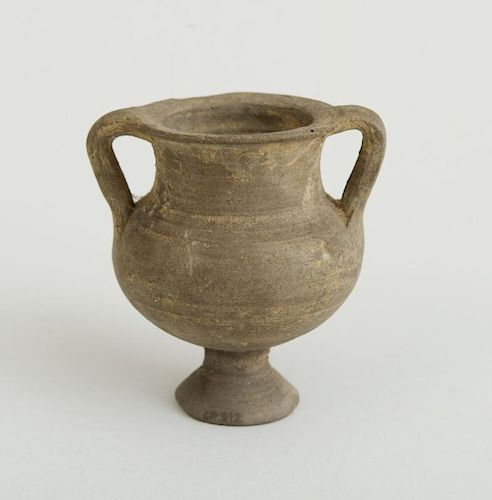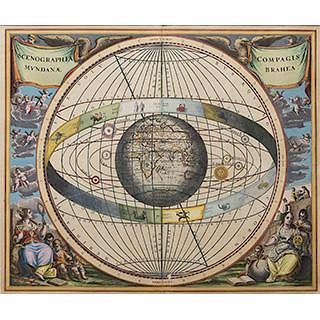RARE CYPRIOT MINIATURE BUCCHERO WARE KRATER
Lot 32
About Seller
STAIR
549 Warren St
Hudson, NY 12534
United States
With a focus on curated sales of modern and traditional furniture, decorations and fine art, Stair has been selling interesting things from interesting people with a unique, sophisticated twist for over twenty years. We are innovative in our approach to marketing and online services, providing a hig...Read more
Categories
Estimate:
$800 - $1,200
Sold for
$400
Absentee vs Live bid
Two ways to bid:
- Leave a max absentee bid and the platform will bid on your behalf up to your maximum bid during the live auction.
- Bid live during the auction and your bids will be submitted real-time to the auctioneer.
Bid Increments
| Price | Bid Increment |
|---|---|
| $0 | $25 |
| $200 | $50 |
| $500 | $100 |
| $3,000 | $250 |
| $5,000 | $500 |
| $10,000 | $1,000 |
| $30,000 | $2,500 |
| $100,000 | $5,000 |
About Auction
By STAIR
Feb 25, 2017 - Feb 26, 2017
Set Reminder
2017-02-25 11:00:00
2017-02-26 11:00:00
America/New_York
Bidsquare
Bidsquare : Objects & Curiosities from Around the World
https://www.bidsquare.com/auctions/stair-galleries/objects-curiosities-from-around-the-world-2135
STAIR internetrequests@stairgalleries.com
STAIR internetrequests@stairgalleries.com
- Lot Description
2 3/4 x 2 3/4 in.
Note: The Metropolitan Museum of Art deaccessioned "duplicate" pieces from the extensive Luigi Palma de Cesnola Collection in March and April, 1928 with Anderson Galleries in Manhattan.The following quote is from a letter written on February 14th, 1928 from Robert de Forest (the president of the MET) to Mitchell Kennerley (the president of Anderson Galleries). The letter is found on the inside cover of the auction catalogue: Cypriote & Classical Antiquities, duplicates of the Cesnola & other collections. Anderson Galleries, Inc. [1928]"Rather than continue to hold these objects in storage where they perform no useful service, the Trustees have determined to dispose of them by auction sale in March and April so that other museums and private collectors can obtain them and enjoy their possession. They deem it a duty to the appreciation of art that all these objects should be put to use. They earlier considered distributing them among other American museums, but to attempt to do so would have involved questions of discrimination and would have delayed vacating space for which the Museum has urgent and immediate need. It is the hope of the Trustees that by distributing these objects among a large number of people the interest in Classical antiquities will be increased. The decorative value of this kind of material is only gradually being recognized. There is no better way of stimulating its appreciation than by placing such objects of art in as many museums, colleges, libraries and private houses as possible."The following quote is found in The MET 59th Annual Report of the Trustees - 1928, which was published in New York in 1929."An important and unusual event of the year was the sale by auction in March and April of duplicates acquired by purchase with the collection of Cypriote antiquities in 1874 and 1876, and other duplicates of objects in the Department of Classical Art. The Trustees have never before acted upon their right to dispose of property of this character; their present decision was governed chiefly by their desire to make these objects useful to others and to save the care and space involved in continual storage."Provenance: By repute, Luigi Palma di Cesnola Collection. Purchased in New York in the mid 1970's.,
- Shipping Info
-
Unfortunately we are unable to pack, ship or dismantle any items. The following is a list of shippers in our area:Arnoff Pack & ShipFine Arts ServicesDHL/FedEx/UPS & LTLTerri Proper351 Millerton RoadLakeville, CT 06039T (860) 435-2909F (860) 435-8119tproper@arnoff.comArnoff Pack & ShipFine Arts ServicesDHL/FedEx/UPS & LTLAshwani Dogra1282 Dutchess TurnpikePoughkeepsie, NY 12603T (845) 790-6281F (845) 452-3606adogra@arnoff.comUPS Store #4541Elise AndersonTodd O'BrienKings Mall1200 Ulster Avenue (#35A)Kingston, New York 12401tel #845-336-4877fax#845-336-3832email: store4541@theupsstore.comMeticulous MoversOwners: Josh and MikeT: 845-256-7047F: 845-256-7039meticulousmovers@live.comFrank LaBarbera'sSpecializing in Fine Arts & Antique Furniture MovingLocal and Long DistancePhone: 845-355-7770Fax: 845-355-7771Email: info@franklabarbera.comP.O. Box 100Slate Hill, NY 10972-0100INTERNATIONAL SHIPPING:Gander and White21-44 44th Rd, Queens, NY 11101(718) 784-8444Bourlet38-20 Review Ave, Long Island City, NY 11101(718) 392-9770Cadogan Tate41-20 39th St, Queens, NY 11104(718) 706-7999
-
- Buyer's Premium



 EUR
EUR CAD
CAD AUD
AUD GBP
GBP MXN
MXN HKD
HKD CNY
CNY MYR
MYR SEK
SEK SGD
SGD CHF
CHF THB
THB













